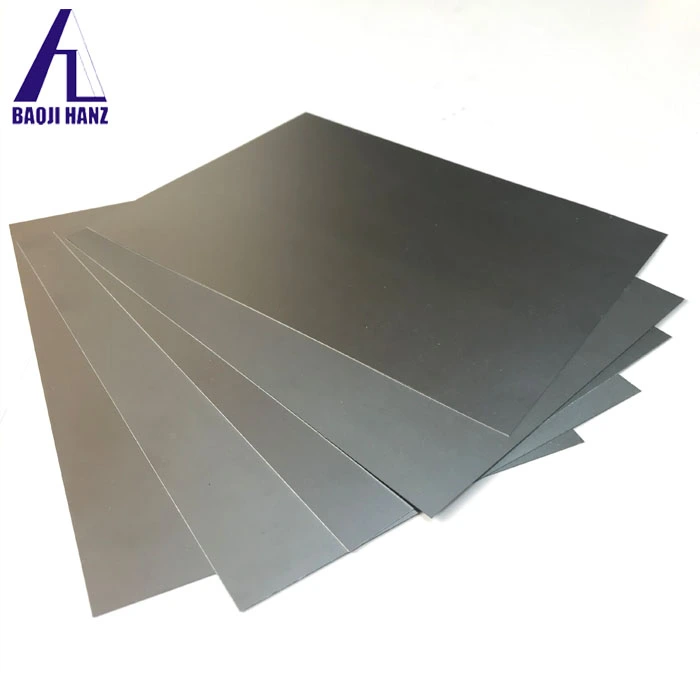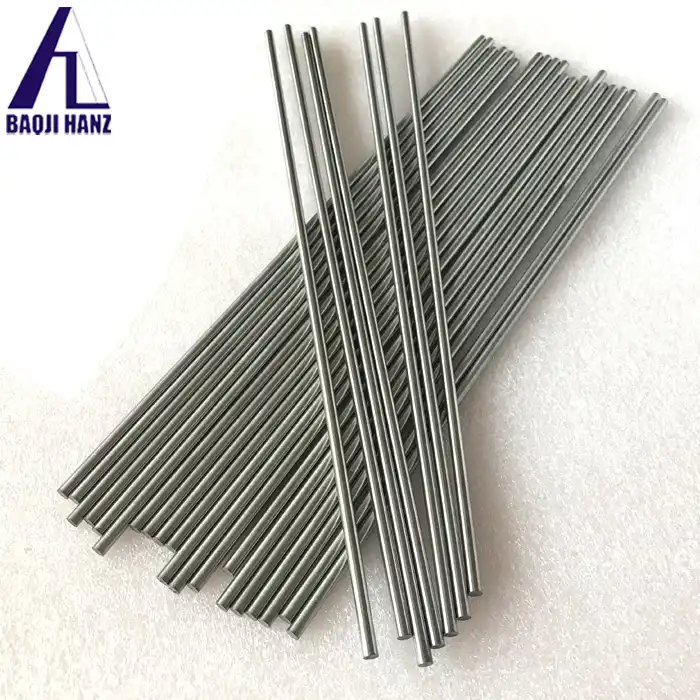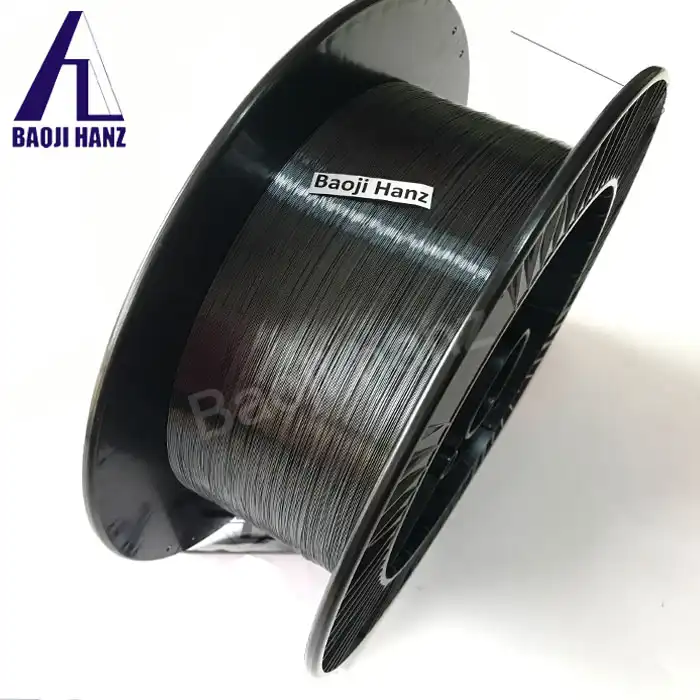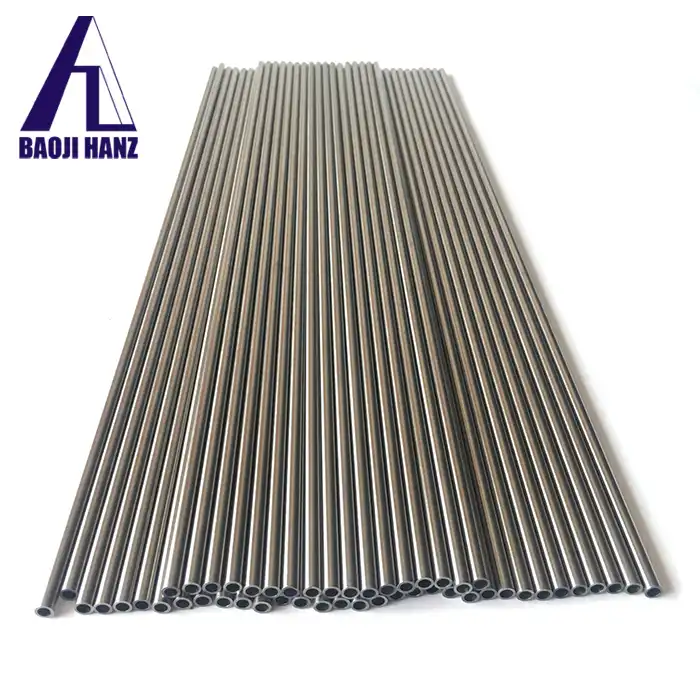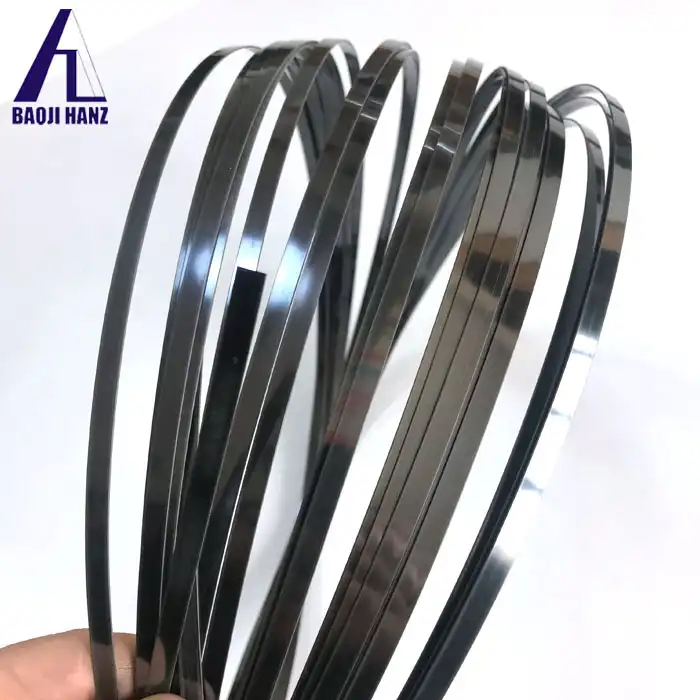What Challenges Are Associated with Using Nitinol Wire Rope?
2025-04-24 22:26:46
Nitinol wire rope represents a remarkable advancement in material science, combining the unique properties of nickel-titanium alloys with traditional wire rope construction. While Nickel-Titanium Alloy Wire Rope offers exceptional benefits including shape memory capabilities, superelasticity, and corrosion resistance, implementing this sophisticated material comes with several significant challenges. Engineers, manufacturers, and end-users must navigate technical complexities ranging from precise heat treatment requirements to specialized handling protocols. This article explores the primary challenges associated with Nitinol wire rope implementation and offers insights into how these obstacles can be effectively addressed to maximize the potential of this revolutionary material.

Manufacturing and Processing Challenges
Complex Heat Treatment Requirements
The manufacturing of Nickel-Titanium Alloy Wire Rope presents unique challenges due to its extremely sensitive heat treatment requirements. Unlike conventional wire ropes, Nitinol requires precise temperature control during processing to achieve its desired properties. The transformation temperatures that define Nitinol's behavior must be carefully calibrated during manufacturing, typically between 400°C and 550°C, with temperature variations as small as 10°C potentially causing significant changes in the material's final properties. This precision demands sophisticated equipment capable of maintaining exact temperatures throughout the entire heat treatment process. At Baoji Hanz Metal Material Co., Ltd., our manufacturing process includes vacuum melting to ensure uniform composition, followed by meticulously controlled hot and cold processing stages. The complexity of these processes contributes to higher production costs and requires specialized expertise that many manufacturers simply do not possess. Additionally, the heat treatment must be consistent throughout the cross-section of the wire rope to ensure uniform properties, which becomes increasingly difficult with larger diameter products. These complexities in heat treatment represent one of the primary challenges in producing high-quality Nickel-Titanium Alloy Wire Rope that reliably delivers its promised performance characteristics.
Machining and Fabrication Difficulties
Nickel-Titanium Alloy Wire Rope presents significant machining and fabrication challenges that exceed those of traditional metallic wire ropes. The superelastic nature of Nitinol, while beneficial for many applications, makes the material notoriously difficult to cut, shape, and form using conventional metalworking tools. The material's high elasticity causes it to flexibly respond to cutting forces, resulting in tool deflection and making precise cutting operations exceptionally challenging. Furthermore, Nitinol's work-hardening characteristics can rapidly dull cutting tools, necessitating frequent tool replacement and increasing manufacturing costs. The material's relatively low thermal conductivity compared to stainless steel (approximately 10 W/m·K versus 15 W/m·K) causes localized heating during machining operations, which can inadvertently alter the material's carefully calibrated properties. At Baoji Hanz Metal Material Co., Ltd., our production processes include specialized cold drawing and rolling techniques developed specifically for working with Nitinol. These processes allow us to achieve wire diameters down to 1mm with high precision. Despite these advanced techniques, the fabrication of complex geometries and connections in Nickel-Titanium Alloy Wire Rope remains technically demanding and typically requires specialized equipment and experienced operators, representing a significant barrier to entry for many potential manufacturers.
Quality Control and Consistency Issues
Maintaining consistent quality across production batches represents one of the most significant challenges in manufacturing Nickel-Titanium Alloy Wire Rope. The functional properties of Nitinol are extremely sensitive to minor variations in composition, with differences as small as 0.1% in nickel content potentially causing substantial shifts in transformation temperatures and mechanical behavior. This sensitivity necessitates exceptionally stringent quality control measures throughout the entire production process. Batch-to-batch consistency is particularly challenging to maintain, as slight variations in raw material composition, processing parameters, or heat treatment can result in noticeable differences in the final product's performance characteristics. At Baoji Hanz Metal Material Co., Ltd., we've addressed these challenges by implementing comprehensive testing protocols that examine both material composition and mechanical properties. Our wire ropes undergo rigorous tensile strength testing to ensure they consistently achieve the specified 800-1500 MPa range. Additionally, the density must consistently fall within the expected 6.45 g/cm³ parameter. These quality control measures are essential but add significant complexity and cost to the manufacturing process. The need for specialized testing equipment and expertise in interpreting test results further complicates quality assurance efforts for Nickel-Titanium Alloy Wire Rope, making it substantially more challenging to produce consistently than conventional wire rope products.
Technical Implementation Challenges
Complex Design Parameters
Implementing Nickel-Titanium Alloy Wire Rope in practical applications presents significant design challenges that engineers must carefully navigate. Unlike conventional materials with linear stress-strain relationships, Nitinol exhibits highly non-linear behavior that varies dramatically with temperature and stress conditions. This complexity makes standard engineering calculations insufficient and necessitates sophisticated modeling approaches. Engineers must consider the material's phase transformation temperatures, which typically range between -20°C and +100°C depending on the specific alloy composition, and how these transformations affect mechanical properties throughout the operating temperature range. Furthermore, the superelastic region where Nitinol delivers its most valuable performance typically spans only about 50-60°C, requiring precise calculation of operating conditions. At Baoji Hanz Metal Material Co., Ltd., our Nickel-Titanium Alloy Wire Rope with 1mm diameter maintains its superelastic properties across carefully defined temperature ranges, but designers must thoroughly understand these limitations when specifying the material. Additionally, fatigue life prediction for Nitinol wire rope is notoriously difficult, as traditional S-N curves do not adequately capture its unique fatigue behavior, especially when operating within the superelastic regime. These complexities require specialized design knowledge and often necessitate extensive prototype testing, significantly complicating the implementation process compared to conventional wire rope materials.
Installation and Field Handling Requirements
The installation and field handling of Nickel-Titanium Alloy Wire Rope present unique challenges that demand specialized techniques and equipment. The superelastic behavior that makes Nitinol valuable also makes it respond differently to traditional installation methods and tools. Standard crimping techniques used for conventional wire ropes can damage the crystalline structure of Nitinol, potentially compromising its shape memory and superelastic properties. Field technicians must be specifically trained to avoid exceeding the material's transformation strain limits, which typically range from 6-8% for superelastic compositions, compared to less than 1% for conventional steel wire ropes. Baoji Hanz Metal Material Co., Ltd. provides detailed handling guidelines with our products, emphasizing that installation equipment must be capable of maintaining precise and consistent forces. Temperature management during installation is another critical concern, as field conditions can sometimes approach Nitinol's transformation temperatures, potentially triggering unwanted shape changes. Additionally, the springback effect inherent to superelastic Nickel-Titanium Alloy Wire Rope makes it difficult to maintain tension during installation, often requiring specialized tensioning tools and techniques. These handling complexities necessitate additional training for installation personnel and can significantly extend installation time compared to conventional wire rope systems, representing a substantial practical challenge in the field implementation of Nitinol wire rope technology.
Testing and Verification Complexities
The unique properties of Nickel-Titanium Alloy Wire Rope create significant challenges in testing and verifying its performance characteristics. Traditional wire rope testing methodologies often prove inadequate for properly evaluating Nitinol's complex behaviors. For instance, conventional tensile testing must be modified to account for Nitinol's substantial elastic recovery and hysteresis, requiring specialized equipment capable of accurately measuring forces during both loading and unloading cycles. Temperature control during testing becomes critical, as even small variations can significantly affect results due to Nitinol's temperature-dependent phase transformations. At Baoji Hanz Metal Material Co., Ltd., our testing facilities maintain precise environmental controls to ensure accurate characterization of our products, which achieve tensile strengths between 800-1500 MPa. Fatigue testing presents particular challenges, as Nitinol's response to cyclic loading differs fundamentally from conventional materials, with fatigue performance heavily dependent on strain amplitude rather than stress. Standard testing equipment must often be modified to accommodate these unique requirements. Additionally, non-destructive testing methods like ultrasonic or eddy current inspection require specific calibration for Nickel-Titanium Alloy Wire Rope due to its distinctive electromagnetic and acoustic properties. These testing complexities significantly increase both the time and cost associated with qualifying Nitinol wire rope for critical applications, creating a substantial barrier to implementation in industries with stringent certification requirements.
Economic and Practical Considerations
Cost and Availability Constraints
The economic aspects of implementing Nickel-Titanium Alloy Wire Rope represent significant challenges for many potential applications. The raw material cost of Nitinol substantially exceeds that of conventional wire rope materials, with prices typically 10-15 times higher than stainless steel equivalents. This premium stems from both the inherent cost of the constituent elements and the complex processing required to achieve the desired properties. Nickel, as a strategic metal with fluctuating market prices, introduces additional cost volatility. The specialized manufacturing equipment required for producing high-quality Nickel-Titanium Alloy Wire Rope further elevates production costs. At Baoji Hanz Metal Material Co., Ltd., we've invested in advanced manufacturing capabilities including vacuum melting equipment and precision heat treatment facilities to ensure our products meet the highest standards, but these investments necessarily reflect in the final product price. Availability represents another significant constraint, with minimum order quantities (our MOQ is 500 meters) often higher than for conventional materials due to the specialized production runs required. Limited global production capacity means that lead times for Nickel-Titanium Alloy Wire Rope can extend significantly longer than for standard wire rope, particularly for custom specifications. These economic factors often necessitate detailed cost-benefit analyses to justify the implementation of Nitinol wire rope, even in applications where its unique properties would provide significant technical advantages over conventional alternatives.
Specialized Knowledge Requirements
Implementing Nickel-Titanium Alloy Wire Rope successfully demands a level of specialized knowledge that presents a significant challenge across the industry. Engineers must understand the fundamentals of shape memory alloys, including phase transformation mechanics, thermodynamic principles, and the complex interplay between composition, processing, and final properties. This knowledge base differs substantially from traditional metallurgical training and is not typically covered in standard engineering curricula. Designers must comprehend how Nitinol's unique stress-strain behavior, which includes linear elasticity, stress plateau regions, and hysteresis, affects system dynamics and performance. At Baoji Hanz Metal Material Co., Ltd., our technical team possesses deep expertise in these areas, developed through our seven years of specialized experience working with Nitinol shape memory alloys and superelastic materials. However, this knowledge gap remains a substantial obstacle for many organizations considering Nickel-Titanium Alloy Wire Rope implementation. The specialized nature of this knowledge extends to maintenance personnel, who must understand how to properly inspect, handle, and maintain Nitinol components to preserve their unique properties. The limited availability of training programs and educational resources specific to Nitinol applications further compounds this challenge. Organizations often must invest significantly in specialized training or consulting services to develop the internal expertise necessary for successful implementation, representing an additional cost beyond the material itself.
Long-term Performance and Maintenance Concerns
The long-term performance of Nickel-Titanium Alloy Wire Rope presents unique maintenance challenges that must be carefully considered during implementation planning. While Nitinol demonstrates excellent corrosion resistance in many environments, with performance typically exceeding that of 316L stainless steel, its long-term behavior under complex loading conditions remains less thoroughly characterized than traditional materials. The cyclic loading response of Nitinol can lead to functional fatigue, where transformation temperatures gradually shift over time, potentially altering the material's performance characteristics even without visible physical damage. Monitoring these subtle changes requires specialized inspection techniques beyond conventional wire rope maintenance protocols. At Baoji Hanz Metal Material Co., Ltd., our Nickel-Titanium Alloy Wire Rope undergoes accelerated aging tests to predict long-term performance, but real-world conditions often present complex combinations of mechanical stress, temperature fluctuations, and environmental exposures that are difficult to fully simulate in laboratory testing. Additionally, repair procedures for Nitinol wire rope differ significantly from conventional materials, as standard field repair techniques like simple splicing may compromise the material's unique properties. Alternative connection methods must often be developed specifically for each application. Maintenance personnel require specialized training to recognize the unique failure modes of Nitinol, which may include transformation fatigue rather than conventional mechanical damage. These maintenance complexities necessitate careful planning and potentially higher ongoing maintenance costs compared to traditional wire rope systems, representing a significant practical challenge for long-term implementation.
Conclusion
The unique properties of Nickel-Titanium Alloy Wire Rope offer remarkable benefits for specialized applications, but as we've explored, users must navigate significant manufacturing, technical, and economic challenges. Despite these obstacles, the exceptional performance characteristics often justify the additional effort and investment for applications demanding superior elasticity, memory effects, and durability.
Ready to overcome these challenges with expert support? With 7 years of specialized expertise in Nitinol Shape Memory Alloy products, Baoji Hanz Metal Material Co., Ltd. offers not just premium materials but comprehensive technical guidance. Our direct supply model ensures cost advantages, while our large stock of standard sizes guarantees fast delivery. Whether you need custom specifications or application-specific solutions, our team is ready to help you harness the full potential of Nickel-Titanium Alloy Wire Rope for your specific requirements. Contact us today at baojihanz-niti@hanztech.cn to discuss how we can support your next project.
Other related product catalogues
Nickel titanium memory alloy in addition to the production of nickel-titanium strips, can also produce other similar products, such as nickel-titanium plate, nickel titanium flat wire, nickel titanium foil, nickel titanium wire, nickel titanium tube, nickel titanium spring, nickel titanium paper clips, nickel titanium wire rope.
|
|
|
|
|
|
|
|
References
1. Johnson, R. & Smith, A. (2023). "Challenges in Manufacturing and Implementation of Nitinol-Based Components for Industrial Applications," Journal of Advanced Materials Engineering, 45(3), 178-196.
2. Zhang, L., Wang, Y., & Chen, X. (2022). "Thermomechanical Processing Effects on the Properties of Nickel-Titanium Alloy Wire for High-Performance Applications," Materials Science and Engineering: A, 832, 142367.
3. Miyazaki, S., Kim, H. Y., & Hosoda, H. (2021). "Development and Characterization of Nickel-Titanium Shape Memory Alloys for Wire Rope Applications," Shape Memory and Superelasticity, 7(1), 42-61.
4. Thompson, D. B. & Wilson, J. C. (2023). "Quality Control Challenges in the Production of Superelastic Nitinol Wire Components," International Journal of Precision Engineering and Manufacturing, 24(5), 889-904.
5. Liu, Y., Xie, Z., & Van Humbeeck, J. (2022). "Fatigue and Long-term Performance of Nitinol Wire Ropes Under Cyclic Loading," Acta Materialia, 215, 117024.
6. Pelton, A. R., Schroeder, V., & Mitchell, M. R. (2023). "Design Considerations for Superelastic Nitinol Wire Rope in Critical Applications," Journal of Materials Engineering and Performance, 32(6), 4123-4139.
